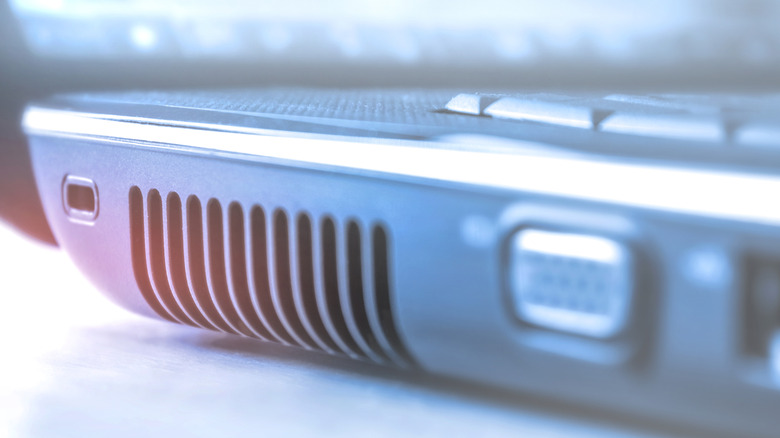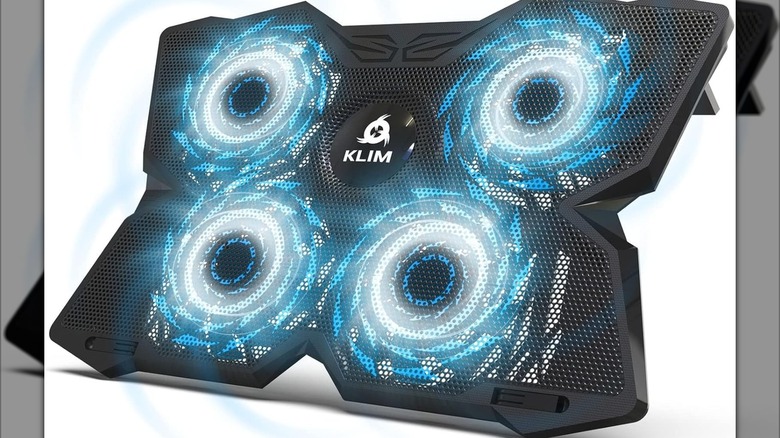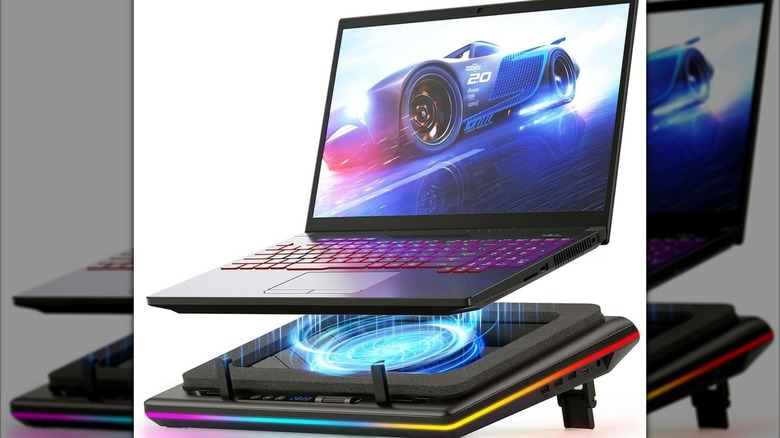Does Your Laptop Constantly Run Hot? This USB Gadget May Help Keep It Cool
We may receive a commission on purchases made from links.
There are several ways you can tell that your gaming laptop is overheating, but one of the most noticeable is when you start to hear noises from your computer. This isn't limited to gaming activities, either — it can occur while editing photos or in the middle of an important Zoom call. The sound, of course, is almost always your device running in overdrive and its fans spinning to life to help cool it down.
Laptops are especially vulnerable to overheating because, unlike larger desktops, there is far less room for heatsinks and other cooling tech.The proximity of the components also leads to quicker heating. The optimal temperature range for your computer is between 50 and 95 degrees — any hotter than that, and you risk damaging its delicate components. Your laptop may shut itself down if it stays too hot for too long. At the very least, you'll likely experience throttling as your device's temperature rises, and your computer will slow down to a frustrating degree.
Many newer computers don't even come with integrated fans, as the latest processors are more efficient and don't have as high a risk of overheating. But when they do run hot, the problem can be exacerbated by the lack of fans. If you have a fanless laptop that tends to run hot, or a laptop with fans that aren't enough to keep it cool, or just want to be prepared, there's a type of USB gadget that may help keep temperatures down and performance up: a laptop cooling pad.
How do laptop cooling pads work?
Though they all serve the same purpose, there are a few different types of laptop cooling pads. Passive coolers don't require any power or USB connection — they typically work by elevating the laptop to help airflow, and may also use heat-conductive materials to draw heat away. Since they're so simple, they often double as a laptop stand.
Active thermoelectric coolers — also called Peltier coolers after the 19th century physicist — transfer heat from one area to another. These are often used inside computers to directly cool the CPU, but you can find laptop active cooling pads that also use some of the same scientific principles. Somewhere in between these two types are cooling pads that use fans. These can include turbo-fans that use foam or another material to create a seal around the base of your computer and prevent heat backflow from the exhaust, as well as vacuum fans that mount to the side or rear of your laptop to draw hot air away.
The simplest type of fan-based cooling tray is one that simply creates more airflow to help heat naturally dissipate. In effect, you're supplementing the fans inside the laptop or adding new ones to fanless models. You can plug a cooling pad directly into your laptop or use any other USB power source. The number and arrangement of fans varies, but most operate the same way: spinning flat blades underneath your device to move air, just as the best USB fans for personal use do.
Which USB laptop cooling pads do users like best?
Laptop cooling pads vary in style and fan placement, but they also differ in the types of extra features they come with. These can include phone mounts, RGB lights, extra USB ports for charging, digital temperature displays, variable speeds, and more.
After testing several models, ZDNet found the Llano RGB Laptop Cooling Pad to be the best overall cooling pad, citing its powerful fan and RGB lights as two of its advantages. It's a turbo-fan, foam-sealing type device, which makes it pricier, but has accessible touch controls that cater toward gamers who want to keep their eyes on the screen. ZDNet also calls the TeckNet Laptop Cooling Pad "one of the better budget options out there" and praises its adjustable speed dial, low power consumption, and lightweight design. The publication notes that it's probably not strong enough for serious gaming laptops but that it will work just fine for Chromebooks and MacBooks. Another affordable model is the Kootek Laptop Cooling Pad, which has five fans and comes in multiple color options. TechRadar names it "the best laptop cooling pad overall" and appreciates its quiet operation and six different height options when using it as a stand. The product is also included on SlashGear's list of the best laptop cooling pads you can buy.
It's important to remember that these devices aren't foolproof methods to keep your laptop cool. If your computer seems like it's overheating no matter what you do, the best thing may be to shut it down and troubleshoot before any serious damage is done.


